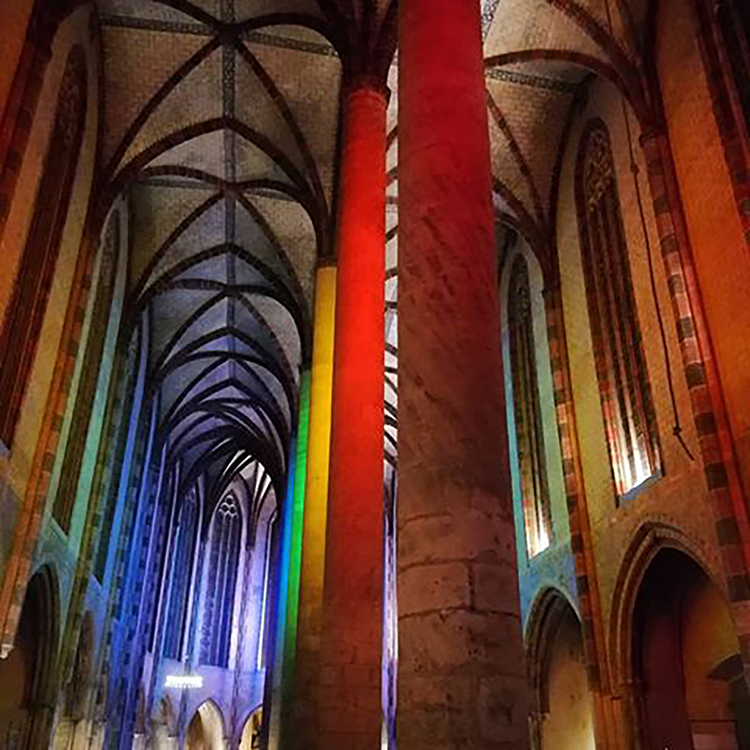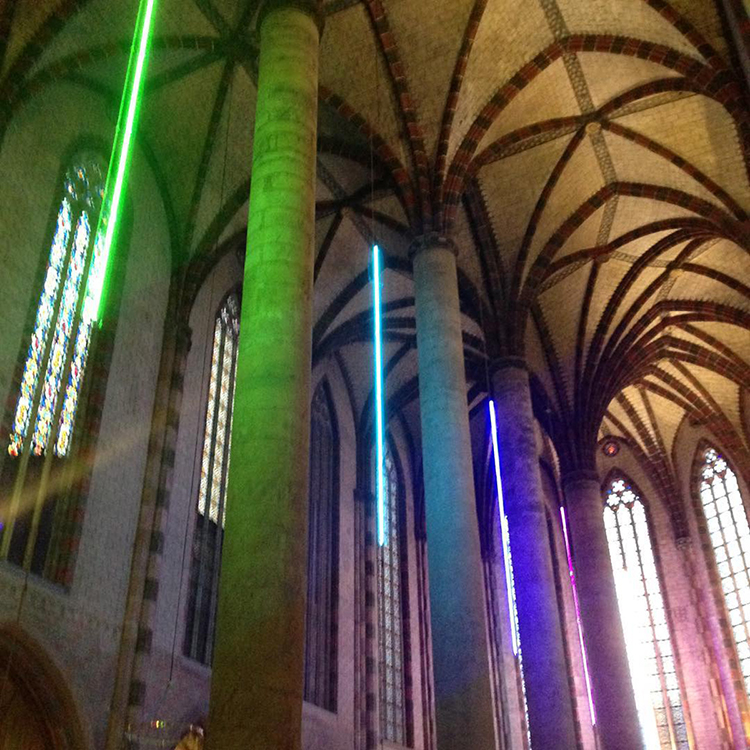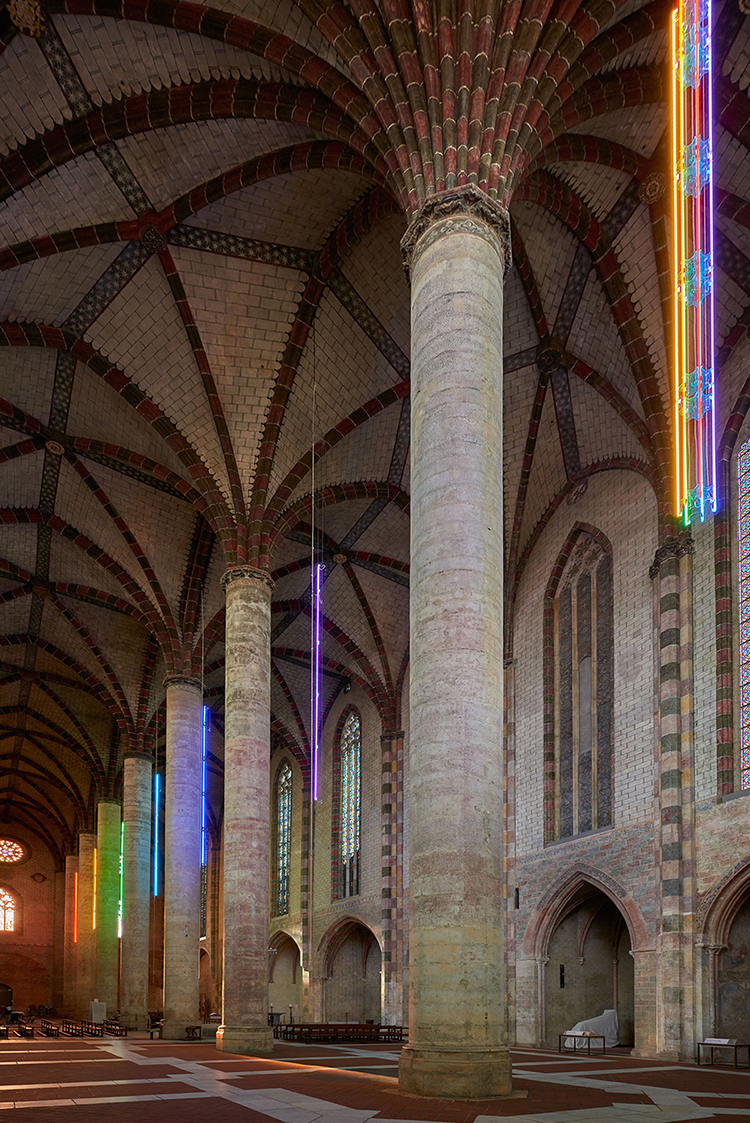- Conception by Sarkis
- Music by Jacopo Baboni Schilingi
- Festival - Le printemps de Septembre - Couvent des Jacobins - Toulouse - 2018
When he first entered this church, Sarkis was immediately amazed by the strong verticality of its central colonnade. Whoever comes into this space can only raise their eyes to “heaven”: the long, narrow nave seems to have been built to suggest elevation, transcendency, the beyond. But Sarkis quickly made this spontaneous remark: “the sacredness has been removed from here”. What has happened in this ancient church is symptomatic of so many other religious monuments whose spiritual dimension and worshipping function have progressively given way to a cultural function and a patrimonial dimension. And the light that baths the nave, mediocrely coloured by the stained-glass windows that symmetrically punctuate its heights seem to bear witness to this absence. And yet “a light on one side, another on the other, each with its own structure and running the length of the main axis [form] a place in which both lights meet” (Livio Vacchini). This opposition-conciliation of two lights according to the church's central axis gave Sarkis the substance and application point of his work.
A long thin neon tube made of crystal hangs in each of the colonnade's seven intervals. Each tube is one of the seven colours of the rainbow. In the choir stands the column from which the twenty-two ribbed arcs that form the “palm tree” burst out. This is where the artist has suspended a sheaf of seven neon tubes that bring together the seven colours. This sheaf lights up and turns off to the beat of calm breathing. Thus Sarkis unravels the procession of colours that state light in all its metaphors throughout his separation plan: life, joy, diversity, conciliation, ascension. This retrieved plane of moral and spiritual elevation makes its imprint to a soundtrack created with musician Jacopo Baboni Schilingi. It gently plays outside noises, ordinary noises of shared life, sounds of weather patterns, of time going by; a whole murmur of the outside world, at our feet in the choir. It slips its repetitions and discrepancies in between the visitors and the sounds of real time, between the material and spiritual worlds. What size to give the luminous tubes that rhythm the nave? Sarkis chose the “cane of Toulouse” – a measuring stick roughly equal to six feet, a multiple of the unit of measure in use at the time the church was built. The work is titled Mesure de la lumière, and that is what it does: it measures the place as well as the light. Hence the knotted ropes that hang alongside the tubes and measure their length. We can see that Sarkis experiences this exceptional monument with the humility of the respect it inspires in him and the empathy it stirs in him. The past cannot pass when artists bring it to the present.




